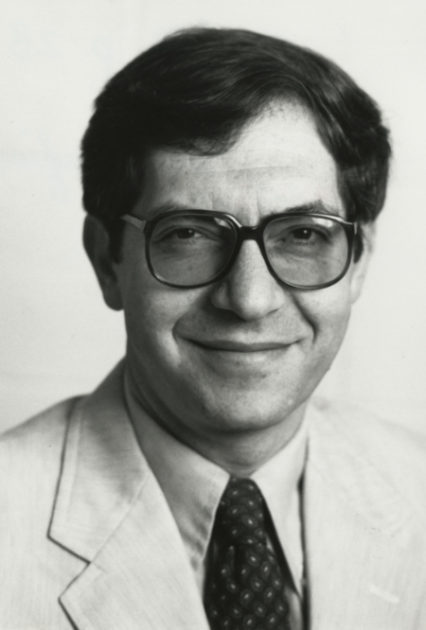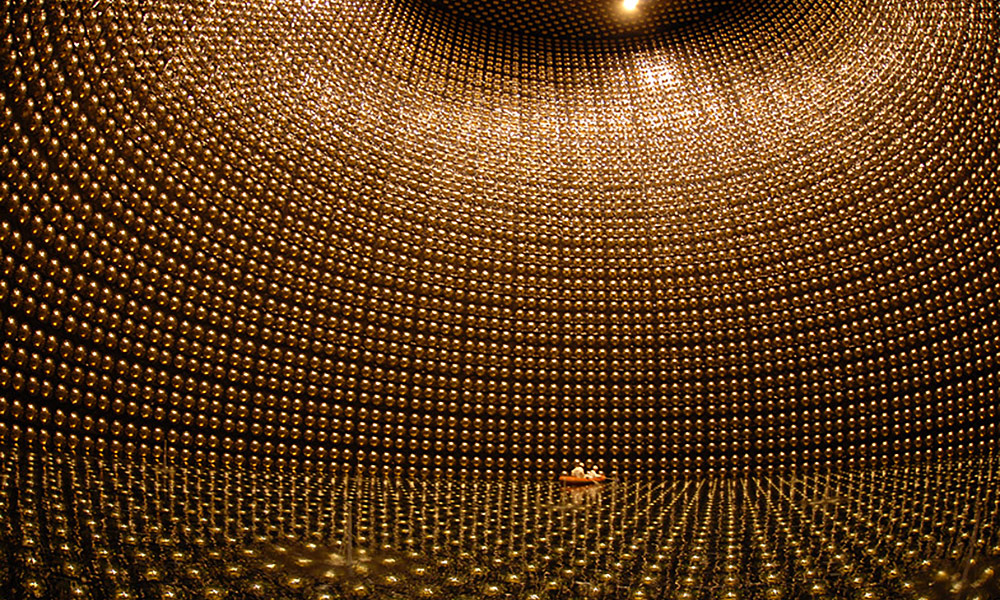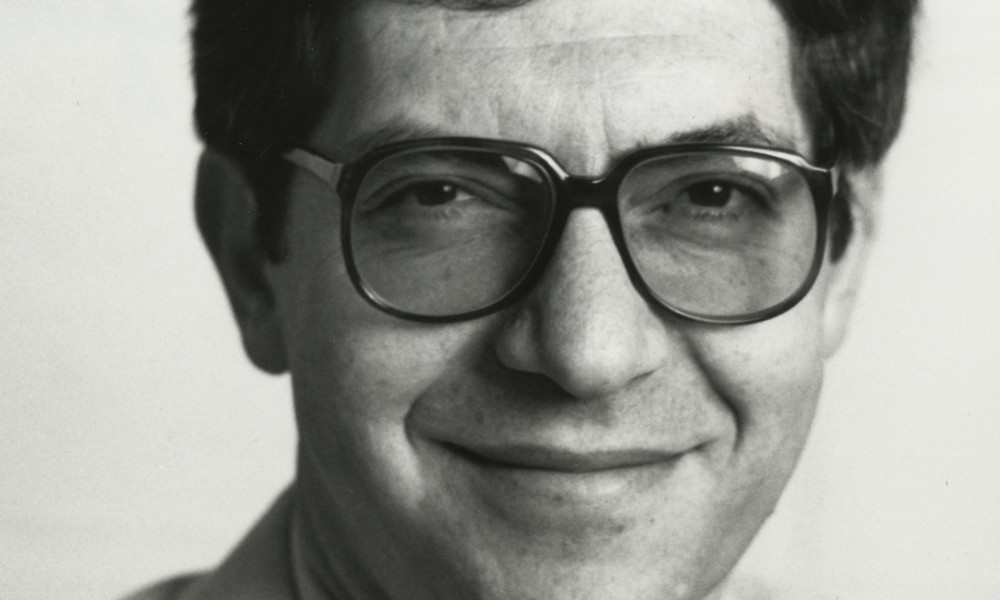The long-time Rochester physics professor studied the building blocks of matter and the nature of quarks.

Thomas Ferbel, a professor of physics at the University of Rochester from 1965 to 2008, is being remembered for his mentorship of students and his collaborations with colleagues in the quest to understand the fundamentals of subatomic particles, including discovering the elusive “top quark.” Ferbel died on March 13 at the age of 84.
In addition to being an active member of the high-energy physics community at its inception, “Tom was an immaculate gentleman, a great human being with a simple heart, a wonderful mentor to students and young faculty alike and was genuinely concerned about the welfare of the students as well as of the Department of Physics and Astronomy,” says Ashok Das, a professor of physics at Rochester who coauthored the popular textbook Introduction to Nuclear and Particle Physics with Ferbel. The book has been translated into several languages and is used all over the world.
Ferbel was born in Poland shortly before the start of World War II. He and his family were exiled in a Russian gulag and a displaced persons camp in Stuttgart, Germany, before immigrating to the United States when Ferbel was 12 years old. He received his PhD in experimental particle physics from Yale University in 1963.
“I fell in love with chemistry in high school, but eventually, in college, I realized what I loved about chemistry was the quantum mechanics,” Ferbel said in an interview with the American Institute of Physics in June 2020.
After serving as a postdoctoral research associate at Yale, Ferbel joined the faculty at Rochester in 1965.
The ‘bubble chamber research group’
“We had a strong group in condensed matter, particle theory, and experiment,” Ferbel said of Rochester at the time. “It was an exciting place.”
The exploration of sub-nuclear physics was still in its infancy when Ferbel entered the field; at the time, a leading technique in high-energy physics was using a bubble chamber—a vessel filled with a superheated liquid such as hydrogen—to detect electrically charged particles.
Adrian Melissinos, a professor emeritus of physics, recalls “encouraging Tom to come to Rochester because we wanted to start a ‘bubble chamber’ group, which, at that time, was one of the premier techniques in high-energy physics.”
The “bubble chamber research group” they formed at Rochester was dedicated to understanding the forces involved in high-energy physics, including the elusive nature of quarks. Quarks make up the protons and neutrons inside atoms and come in six different “flavors,” or types. Today researchers understand that quarks are the basic building blocks of matter, although scientists initially believed these particles were mathematical constructs for classifying the unstable states of matter that bubble chambers were uncovering.
A new era in high-energy physics
Thomas Ferbel, in his own words
In 2020, Ferbel recounted his life and career as a physicist as part of the American Institute of Physics Oral History project.
In the early 1970s, Ferbel became part of the DZero collider experiment, an international collaboration of scientists at Fermilab in Batavia, Illinois, studying the fundamental nature of matter. In 1995, he played a role in one of the most important discoveries in the field of high-energy physics: confirming the existence of the elusive top quark, the heaviest of all observed subatomic particles.
“With this discovery of the top quark, our overall picture of matter fits together beautifully,” Ferbel said at the time.
Ferbel spent the rest of his career developing ways to learn more about the top quark. In 2004, he and members of his research group, including then-doctoral students Juan Estrada ’02 (PhD) and Maria Florencia Canelli ’03 (PhD), used methods and calculations to measure the top quark with unparalleled precision. The mass of the top quark has implications in determining the makeup of Dark Matter, which comprises 90 percent of the universe, and in indirectly determining the mass of the Higgs boson, also known as the “God Particle,” which is theorized to give rise to mass itself.
The revision of the top quark mass started as a thesis project for Estrada, now a scientist at Fermilab.
“Tom was my PhD advisor, and he had a tremendous influence on me,” says Estrada, who met Ferbel in Argentina just after Estrada finished his undergraduate degree. “He introduced me to the field of high-energy physics that became my area of research. He was the best advisor you could imagine, helping me navigate life in the US, at the University of Rochester, and at Fermilab.”
In 2005, Canelli, who is now a professor of physics at the University of Zurich, was awarded the American Physical Society’s Tanaka Dissertation Award in Experimental Particle Physics for the research she conducted as part of DZero.
“Tom was an example on how to be a good collaborator on a large experiment,” Canelli says. “Most remarkably,” she adds, “Tom was one of the few scientists that has read, reviewed, and carefully edited the language of hundreds of papers at DZero and CMS (the Compact Muon Solenoid experiment at CERN) before submission.”

A lasting legacy
In 1980, Ferbel founded a biennial Advanced Study Institute (ASI) on Techniques and Concepts in High Energy Physics. Funded by NATO, the program brought together scientists from the United States and Europe to study concepts in the field of high-energy physics. Ferbel served as scientific director of the program for 20 years.
He was a fellow of the American Physical Society and secretary-treasurer of the Division of Particles and Fields; and chair of the Committee on the International Freedom of Scientists. His various awards included an Alfred P. Sloan Fellowship, a John S. Guggenheim Fellowship, and the Alexander von Humboldt Prize.
Ferbel published more than 300 articles in experimental particle physics, edited numerous textbooks, and served on the editorial board of several journals. He held visiting appointments at Fermilab and the Max Planck Institute and was a visiting professor at the University of Paris Sud in France, the University of Mainz and the University of Freiburg in Germany, and the University of Maryland. From 2004 to 2008, he served as manager of the US Program of Operations for the Large Hadron Collider at CERN. The LHC is the world’s largest and highest-energy particle collider.
The associate dean for graduate studies at the School of Arts & Sciences from 1989–¬1991, he retired from teaching in 2008 after a 43-year career mentoring numerous graduate students and postdoctoral associates.
Ferbel also taught undergraduates, including Steven Chu ’70, the 1997 Nobel laureate whom Ferbel recalled would often stay after class to discuss physics with him.
Ferbel is survived by his wife, Barbara; son, Pedro Ferbel-Azcarate; and daughter, Natalie Ferbel.
Read more
 In an underground mine in South Dakota, researchers unravel mysteries of dark matter
In an underground mine in South Dakota, researchers unravel mysteries of dark matter
The digital electronics designed, developed, delivered, and installed by Rochester researchers are an integral piece of the puzzle, as an international team of scientists works to detect dark matter particles.
 New laser technique will allow more powerful—and smaller—particle accelerators
New laser technique will allow more powerful—and smaller—particle accelerators
Researchers at Rochester’s Laboratory for Laser Energetics have outlined a method to shape intense laser light in ways that could lead to tabletop experiments to probe the Higgs boson and explore the existence of extra dimensions.
 Why is the universe made up almost exclusively of matter? Neutrinos may hold the key
Why is the universe made up almost exclusively of matter? Neutrinos may hold the key
Experiments conducted in a mine in Japan may hold clues to explain why the matter than makes up the universe escaped annihilation by anti-matter during the Big Bang.





